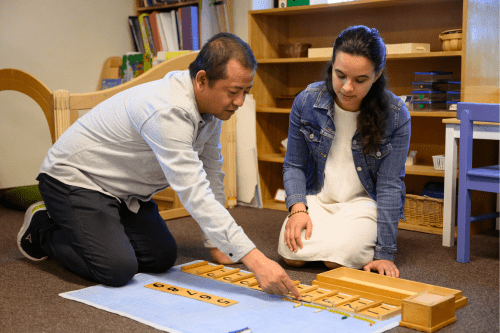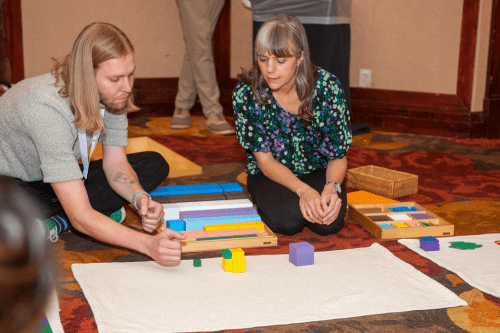How to Design Your School Website

In the past, schools needed to hire a graphic designer and a developer to make their school website come to life. Now, with drag and drop website builders, you can create your own professional looking site within a few hours. No coding experience is necessary for most of these tools, but to pick the right platform it’s a good idea to plan, because as your school grows, so will your website. A combination of research and planning can save your school from becoming mired in an antiquated website on a platform that no longer serves your school’s needs.
Step 1: Define Your School Website’s Purpose
All websites are primarily an organization’s business card. Talk with your board, administration, and teachers to decide what other purpose your school website will serve. Decide how much functionality is needed for tasks such as a newsletter sign-up or calendar scheduling. Some functions might not be needed for a year or two as your school expands, but knowing in advance which functions you will need dictates the platform to choose.
When deciding your school website’s purpose, ask the following questions:
- Will the website function as a communication tool? If so, will it be one sided and reserved for school announcements? Or will you need a messaging system, as well?
- Will the website be a marketing tool? School websites are a wonderful public relations tool.
- Will the website be an informational resource to help educate people about the Montessori method?
- Will you have time to write and update spotlights on teacher and/or student work?
- Do you want a newsletter sign-up form?
- Do you want scheduling capabilities to allow parents of potential students to register for events like open houses or to contact you for more information?
- Do you want to highlight AMS or other association news?
- Do you need to integrate with any digital platforms currently being used in the classroom?
- Will the website function as a portal to a Learning Management System (LMS)?
- Do you need a private area for currently enrolled parents and students? If so, what information will be posted there?
- Will you have to connect your website to a Customer Relationship Management (CRM) system to manage student data?
Strengthen your organization’s mission and vision statement. This and the questions above will guide you in choosing a platform and a website builder. As you answer the questions you might be tempted to choose all functions possible for your website. However, websites that try to be everything to everyone rarely are anything to anyone. Being clear about your school’s goals and having realistic expectations will save you from the headache of a website redesign.
Step 2: Choose a Platform
- Content Management System (CMS) – This is the platform you need to house all your online content and design the site. Most CMS have a drag-and-drop website builder so no coding is needed. A CMS is where you edit, revise, and manage your website. Squarespace and WordPress are two well-known CMS.
- Learning Management System (LMS) – This is a platform that hosts and delivers e-learning. School websites usually have a link to lead students from their website to the e-learning platform where students sign in to access lessons: Moodle, Canvas, and Google Classroom are well-known examples. Many smaller schools do not use a LMS.
- Customer Relationship Management (CRM) – This will track your customers and data. A CRM simplifies tracking student data and fundraising at large schools. However, setting up a CRM and learning how to use it has a steep learning curve. See if your school can get a free trial of the product before committing to the monthly fees. Zoho and Salesforce are well-known examples.
- Application Programming Interface (API) – An intermediary program that allows two software programs to communicate with each other.
Many smaller schools will not need an LMS to deliver digital lessons or a CRM to log student data. Even if a school does need a certain amount of app integration most CMS have functionality to integrate e-newsletter mailing lists and other email campaigns. When reviewing CMS platforms choose one that will work well to support your website and all of its content. Be sure to look at the platform’s plugin or API page, especially if your school already uses a communication system like Mailchimp, MailerLite, or Constant Contact. Make sure the CMS you choose has the necessary plugin to support whichever e-newsletter software you use.
Step 3: Collect Content
In web design, assets refer to all content that goes on a website including text, photos, illustrations, charts, and more. Before you start to build your site with a CMS builder, make sure you have all of your content. For logos, make sure you have a high resolution image (preferably a .png) so that it looks sharp on any size screen. Keep your logo files together and if they’ve been lost along the way see if the original designer can resend them. It’s always a good idea to have high-resolution versions in .jpg and .png formats for the web. For print purposes request your logo in a PDF or .eps format.
Step 4: Style your Website
Look at other schools' websites and note what you like about them in terms of color, fonts, and layout. The first top half of the website is considered “above the fold," and it’s the first portion of the site potential students will see. Look at other schools' websites: does that vital above-the-fold space sing? Or is it wasted? Design that space to be eye-catching and informative. Many schools put a large photo at the top of the page, but over 50% of people looking at your website are doing so on a mobile device. They will only see the photo when the page loads. Be certain your most important content is available on the top half of smaller screens, too.
Final Steps
Before embarking on the journey of creating your school website, look to your team and ask who is tech savvy? Who can be the point person for your site? Assigning login permission to more than two or three people can lead to a disorganized and error-prone website. Most CMS platforms allow a 14-day trial period, so you and your website point person can get a feel for working on it. Ultimately, the best CMS for your school is the one that seamlessly fits your workflow and capabilities.
About the Author
 |
V. Kulikow is a former Montessori teacher and youth services librarian. She currently works as a UX designer and enjoys content creation both with words and images. |
Interested in writing a guest post for our blog? Let us know!
The opinions expressed in Montessori Life are those of the authors and do not necessarily represent the position of AMS.


















